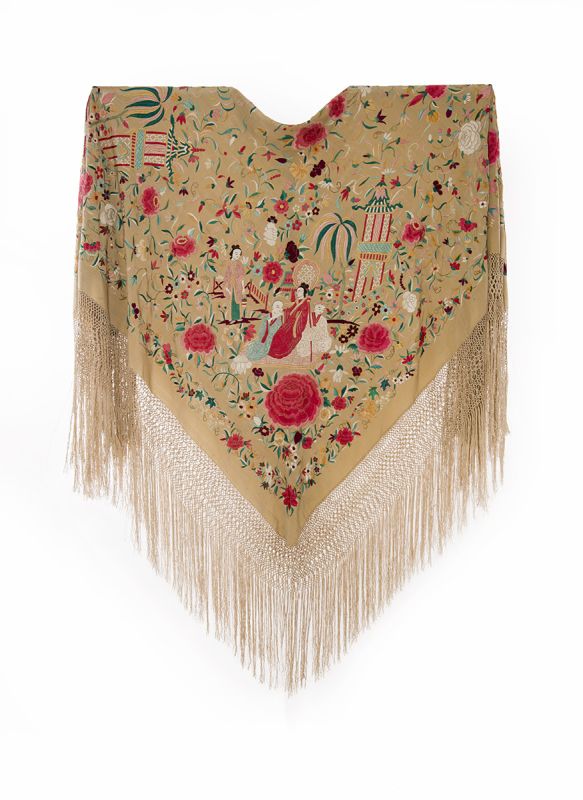Nikita Yingqian Cai
Manila Shawls and Sangleys
Since the Ming dynasty, Shunde has been a wealthy and populous town located at the mouth of the Pearl River, rich in agricultural and aquatic products. It also developed a robust silk industry. Manila shawls made of Shunde silk were embroidered by Guangdong artisans. In order to cater to the international aesthetic of the time, artisans replaced lotuses, dragons, and other traditional Chinese patterns with roses and carnations. Latin American women were captivated by these complex floral silk embroideries, and the fringes from the adornment of American indigenous peoples added character to the work of flamenco dancers. The Spanish crisscrossed the Pacific Ocean and dominated American, Asian, and European trade for centuries, trading mountains of silk, porcelain, and tea. These products were shipped from Guangzhou to Manila, and then on to Acapulco, before finally arriving at the southern Spanish port of Seville. Ferdinand Magellan’s journey began in Seville; these large Spanish ships laden with American silver and fervent Catholic missionaries traveled to the Philippines. That was the golden age of Iberian mercantilism; however, the Spanish very quickly ceded Asia’s bounty to the British and Dutch East India Companies.
The missionaries, who had just arrived in the Sulu Sea and wanted to make inroads via the South China Sea, realized very early on that converting the Chinese people living in Luzon and Manila to Catholicism could make colonial rule more effective. Chinese residents originally from Fujian, Guangdong, and Taiwan followed the Maritime Silk Road east from Malacca, serving as intermediaries in imperial trade. They were called "sangleys" in the Philippines, a word that originally comes from Tagalog. Several sets of Chinese characters are used for this word, but its pronunciation may stem from "seng-li," the Hakka word for "business." In Imagined Communities, Benedict Anderson noted that José Rizal, the national hero of the Philippine Revolution, was a sangley, in an attempt to differentiate "sangley" from the racialized Spanish term "mestizo" (Portuguese: mestiço) transplanted from the Americas.
(Translated by Bridget Noetzel )

A Manila Shawl. Source: the Internet